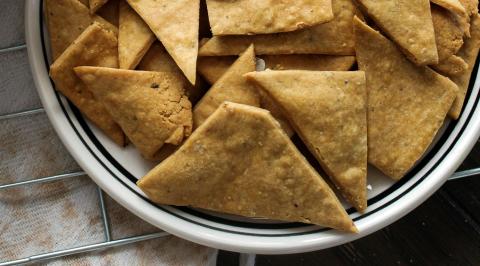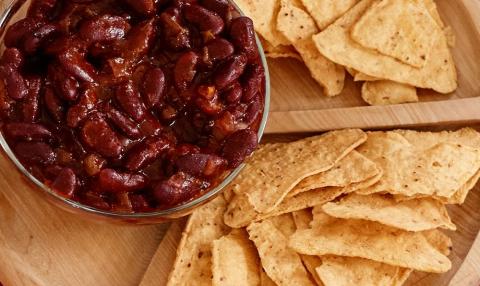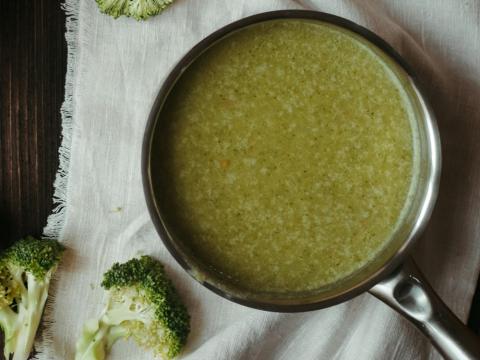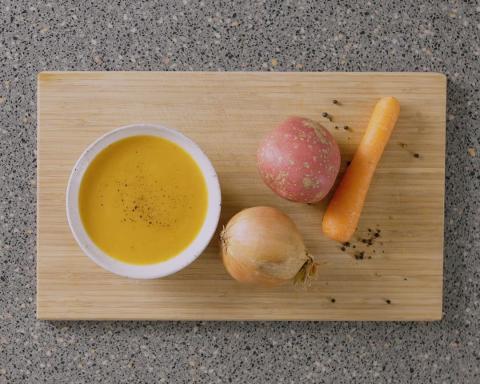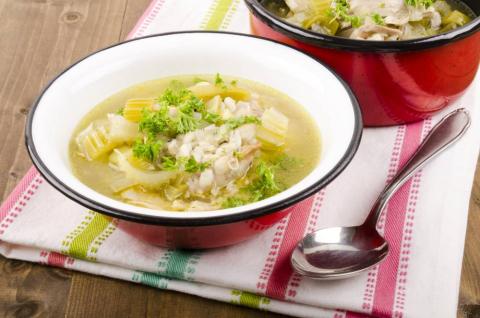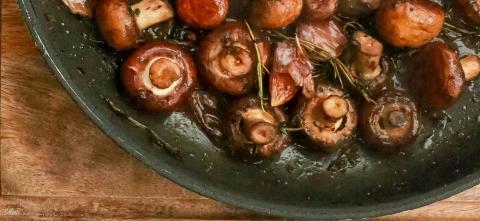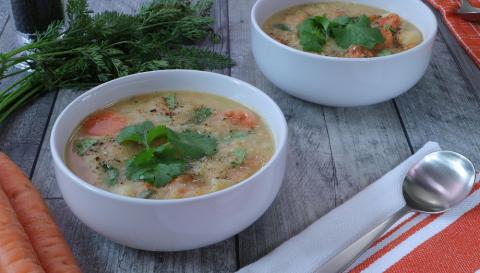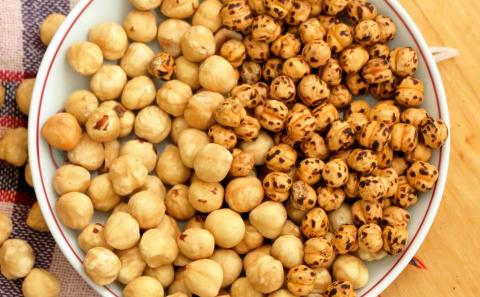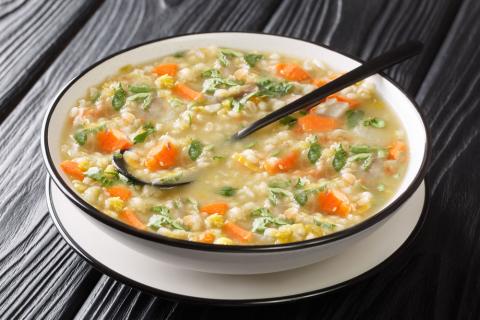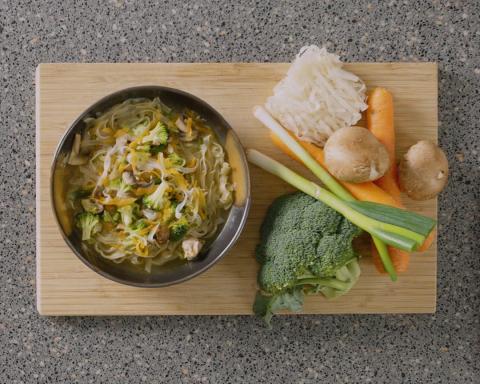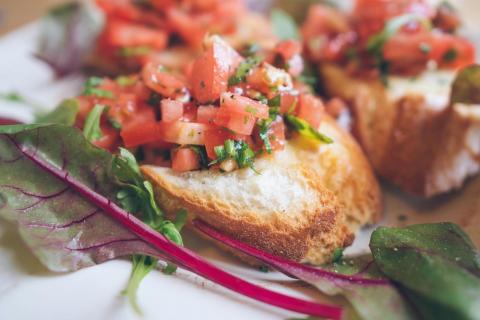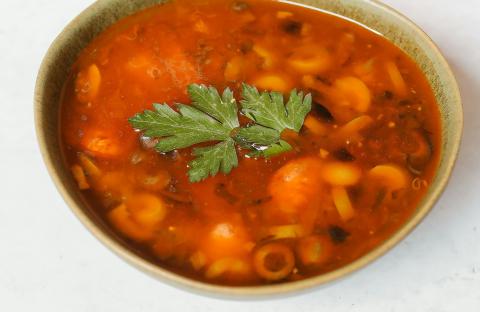- 1 (500g) Butternut Squash
- 1 Medium Sized (150g) Onion
- 3 Sticks (90g) Celery
- 1 Medium Sized (80g) Carrot
- 5 Cups (1L) Water
- 2 Tablespoons (20ml) Vegetable Oil
- 2 Reduced Salt If Possible (14g) Vegetable Stock Cubes
- (1g) Ground Black Pepper
Ingredients
Allergy Disclaimer
Always check the label of each ingredient for allergy warnings.
Method
- Peel the butternut squash, onion and carrot. Wash celery.
- Chop all the vegetables and boil water for the stock.
- Heat oil in a large pan then add the onions, put lid on pan and let them sweat for 3 minutes.
- Add carrots and celery to the onions and let them sweat for another 2 minutes
- Add water, stock cubes and butternut squash to the pan and stir until stock cube dissolved. Once soup begins to boil, turn down heat and simmer until vegetables are soft – about 10-15minutes. Add pepper to taste.
- Soup can be then sieved or blended to a smooth consistency. Heat through before serving.
Time Saver Tips
Soup can be prepared in advance and heated when required. Cool before putting in fridge or freezing.
Cost Saver Tips
Why not cook a big batch and freeze it for later on in the week?
Nutritional Information
Based on a single serving of 371g (% of an adult's reference intake)
Energy
102 kcals ( 5 %)
428 kJ ( 5 %)
Fat
0.7 g ( 4 %)
Saturates
12.6 g ( %)
Sugar
7.8 g ( 9 %)
Salt
0.4 g ( 7 %)
Detailed nutritional information
| Per 100g | Per 371g serving | |
|---|---|---|
| Energy Kcals | 27 | 102 |
| Energy Kj | 113 | 428 |
| Protein | 0.5 g | 1.1 g |
| Total Fat | g | g |
| Saturated Fat | 0.2 g | 0.7 g |
| Carbohydrates | 3.4 g | 12.6 g |
| Total Sugars | 2.1 g | 7.8 g |
| NSP Fibre | 0.7 g | 2.7 g |
| Sodium | 23 mg | 84 mg |
| Salt | 0.1 g | 0.4 g |
Find out about nutritional labelling
Nutrition labels on the front of packaging
- Most of the big supermarkets and many food manufacturers display nutritional information on the front of pre-packed food.
- Front of pack nutrition labels provide information on the number of grams of fat, saturated fat, sugars and salt and the amount of energy (in kJ and kcal) in a serving or portion of a recipe.
- The labels also include information about reference intakes (expressed as a percentage) which are guidelines about the approximate amount of particular nutrients and energy required for a healthy diet.
- The colour coding tells you at a glance if the food has high (red), medium (amber) or low (green) amounts of fat, saturated fat, sugars and salt.
- The more greens on the label, the healthier the choice
- Amber means neither high nor low, so you can eat foods with all or mostly ambers on the label most of the time.
- Reds on the label means the food is high in that nutrient and these are the foods we should cut down on. Try to eat these foods less often and in small amounts.
Food shopping tips
If you’re trying to decide which product to choose, check to see if there's a nutrition label on the front of the pack. This will help you to quickly assess how your choices stack up. You will often find a mixture of red, amber and green colour coding for the nutrients. So when you're choosing between similar products, try to go for more greens and ambers and fewer reds if you want to make a healthier choice.
 Activities & Play
Activities & Play Behaviour
Behaviour Childcare
Childcare Development & Growing Up
Development & Growing Up Family, Friends & Relationships
Family, Friends & Relationships Feeding Your Baby
Feeding Your Baby Food & Eating
Food & Eating Health & Safety
Health & Safety Mental Health & Wellbeing
Mental Health & Wellbeing Money & Work
Money & Work Online Behaviour & Safety
Online Behaviour & Safety Pregnancy & First Days
Pregnancy & First Days School & Education
School & Education Sleep
Sleep


